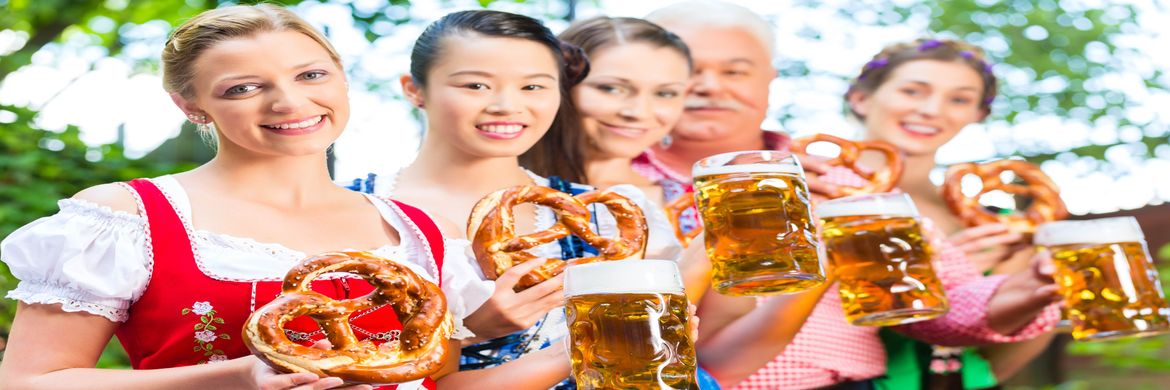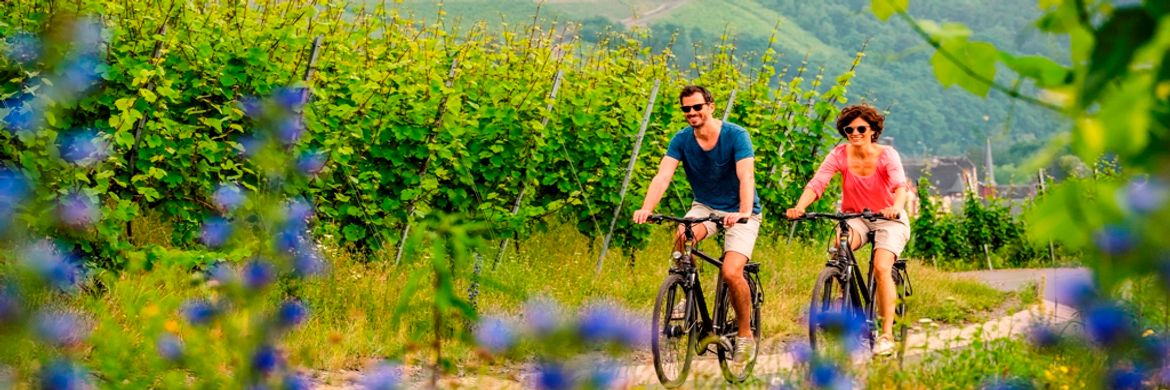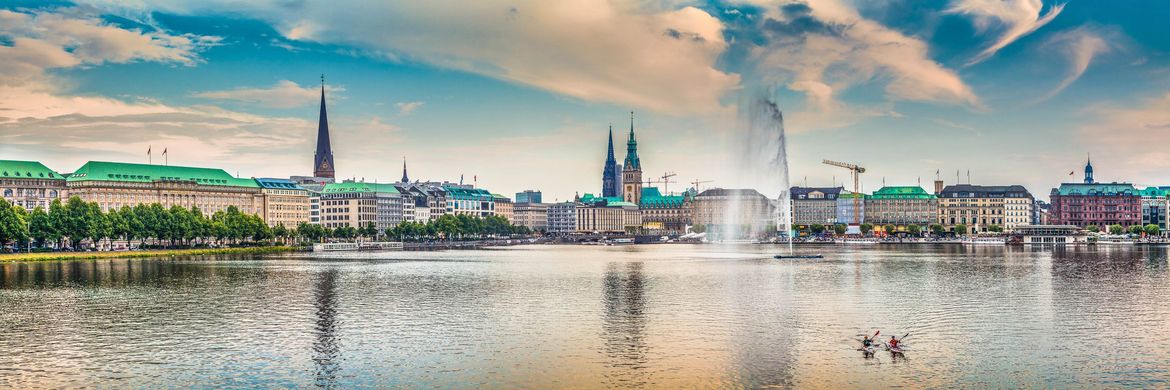Germany Escapes
Germany is a Western European country with a landscape of forests, rivers, mountain ranges and North Sea beaches. It has over 2 millennia of history. Berlin, its capital, is home to art and nightlife scenes, the Brandenburg Gate and many sites relating to WWII. Munich is known for its Oktoberfest and beer halls, including the 16th-century Hofbräuhaus. Frankfurt, with its skyscrapers, houses the European Central Bank.
Germans drink beer, have more than 25.000 castles and drive 220 km/h on the Autobahn. Well, yes, they do – but there is so much more to discover. Germany is a real treasure chest and we have the key to open it for you.
From the wild coasts in the north to the massive Alps in the south; in the west, the lovely Rhine and Mosel valleys with their vineyards; in the east, beech forests and mystical moorland. We will introduce you to the “must-have-seen’s” and the best kept secrets of the country – in the most luxurious way. You want it perfect and personal? Let us surprise you.
Prepare for a roller coaster of feasts, treats and temptations as you take in Germany’s soul-stirring scenery, spirit-lifting culture, big-city beauties, romantic palaces and half-timbered towns. Few countries have had as much impact on the world as Germany, which has given us the printing press, the automobile, aspirin and MP3 technology. This is the birthplace of Martin Luther, Albert Einstein and Karl Marx, of Goethe, Beethoven, the Brothers Grimm and other heavyweights who, each in their own way, have left their mark on human history.
The largest and most modern of the Central European capitals, Berlin has reinvented itself since reunification into Europe’s powerhouse city. Each area has its own unique character, from the historical heart in Mitte to the hipster center of Kreuzberg. With over 80 museums from contemporary art to WWII history, and the outstanding Berlin Philharmonic, high culture predominates. Take a day trip to the nearby Potsdam. This enchanting town was the summer residence of the kings of Prussia and offers gorgeous gardens and parks and several palaces, from the Cecelienhof – the site of the Potsdam Agreement, to the intimate Rococo gem of Sans Souci.
Not to be overlooked, Munich in the heart of Bavaria, is a city that has something for everybody – from history buffs to art aficionados, to car lovers and beer enthusiasts. After taking in all the different architectural styles of the Old Town, including the magnificent Neo-Gothic Town Hall, don’t miss the wonderful food market of Viktualienmarkt. The surrounding countryside is dotted with castles and charming villages, with the impressive Alps looming in the background.
BERLIN
As the country’s capital, you’ll be pressed to find a German city more diverse than Berlin. With an estimated population of 3.7 million, Berlin is the European Union’s second most populous city and is home to a wide range of people with truly diverse backgrounds and cultures. Though it may be a metropolis with an impressive city skyline and plenty of shopping options, one-third of Berlin is covered in lush forests, quaint parks and gardens, rivers, canals and lakes. But of course, one of the city’s main tourist appeals is its diverse history. A tour of Berlin will certainly include some monumental sights, such as the Berlin Wall (including Checkpoint Charlie), which is also one of the top tourist attractions in Germany; the Brandenburg Gate, the Holocaust Memorial, and a range of fascinating museums.
MUNICH
Munich is the capital of Bavaria, a German state with its own unique culture. Bavaria is home to a range of traditions that are quite diverse from the rest of Germany, including Oktoberfest (a popular annual celebration that typically involves plenty of beer) as well as traditional clothing like the lederhosen and dirndl. Munich can be found nestled within the Bavarian Alps, along the River Isar. Visit this city for some of the world’s best beer gardens, a couple of fairytale palaces (The Residenz and the Nymphenburg Palace), and delicious, fresh pretzels.
DRESDEN
Often called “Florence on the Elbe” or the Jewel Box City, for its magnificent Baroque and Rococo architecture, Dresden has been beautifully reinstated after suffering major damage in World War II. The capital of the province of Saxony, Dresden has an artistic ambience, which gives it a dreamy quality. Known for its fine craftsmanship, particularly the Meissen porcelain, which is made here, Dresden China was once a tradition in many aristocratic homes. Inspired by Versailles, the Zwinger Palace is a highlight. The Green Vault within the palace has an impressive art collection, and the city’s historical sites are worth exploring. Take a leisurely stroll through its thoroughfares, and experience a more personal side of Dresden
NUREMBERG
Most famous for the Nuremberg trials, when 22 prime Nazi criminals were sentenced for war crimes, the city of Nuremberg has plenty to offer its visitors. Those interested in Germany’s turbulent, dark past may which to visit the Documentation Center Nazi Party Rallying Grounds, a museum hosted in the transformed remains of the Nazi party’s former Congress Hall. Nuremberg also has a beautiful historical centre, highlighted by its medieval castle and palace, Nuremberg Castle, and its ancient city walls.
COLOGNE
While rarely at the top of a German visitors ‘must see’ list, Cologne is yet another of Germany’s bustling, cosmopolitan cities, a true hub of culture and history. While much of the city’s old buildings were destroyed by bombing during World War II, Cologne’s old town (Altstadt) features some very photogenic colorful buildings and cobbled streets, which makes one of the best cities to visit in Germany. The one sight you simply cannot miss in Cologne, however, is the Kölner Dom (the Cologne Cathedral), a cathedral in the High Gothic style featuring an impressive 56 pillars. Be sure to go inside and climb the south tower for panoramic views of the city and the River Rhine winding through it.
FRANKFURT
Frankfurt may be very commercially focused as Europe’s largest financial centre, but there is also plenty to see as a visitor to the city. Frankfurt’s most popular tourist attraction is certainly its Altstadt, or Old Town, and its main square – Römerberg. There you’ll find Römer, the iconic building (reminiscent of a colorful gingerbread house) that has been the city’s town hall since 1405. Other popular sights in Frankfurt include Palmengarten, a large botanical garden with impressive greenhouses, the birthplace of famous writer Johann Wolfgang von Goethe, and the Frankfurt Cathedral.
ROTHENBURG OB DER TAUBER
Though officially a town rather than a city, there was no way that Rothenburg ob der Tauber wouldn’t find its place on our list. Walking through this stunning medieval town is like stepping into a time machine as the city has remained virtually untouched since the Thirty Years’ War in the 1600s. While there is plenty to see just roaming the town’s cobbled streets, Rothenburg ob der Tauber is also home to some unique museums, including the Christmas Museum, the Craft House, and the Doll and Toy Museum. Before you leave, be sure to climb the Roeder tower for views of the town’s arched red roofs. Don’t forget your camera, as this town is picture perfect!
- Garden secrets from the monastery – “Eco-tomato,” “organic potato,” “sustainable cultivation,” these terms had not yet been invented when the Benedictine nuns at the Abbey of St. Mary in Fulda decided to banish slugs, herbicides and chemical fertilizers from their land. While during Germany’s economic miracle, the insecticide DDT was sprayed quite liberally without concern, these nuns switched to natural cultivation.
- Places of the Golden 20s in Berlin – It was like a life of intoxication. In the 1920s, Berlin was considered to be the fastest and most dazzling metropolis in Europe. In the so-called “Golden Twenties,” the heyday between World War I and World War II, the city was a pioneer in art and fashion, science and technology and had the reputation of being the center of all imaginable pleasures.
- Castle Schachenschloss –Neuschwanstein, Herrenchiemsee and Linderhof are the famous fairytale castles built by the Bavarian King Ludwig II in the 19th century. The buildings could hardly be larger, more pompous or more elaborate; they are world famous and are visited by millions of tourists every year!
- The secrets of Maulbronn Monastery – From rapacious abbots, a medieval underfloor heating system to the secret scourging chamber, no one knows the secrets and stories of the old monastery as well as Angelika Braun. The 56-year-old has grown up behind the meter-thick walls, and will give you a guided tour through her own personal Maulbronn.
- Jan Kath – carpet design made in Germany- In an old machine factory in the Ruhr district, Jan Kath, one of the most important carpet-designers on the international stage, has his headquarters. Here, the 45-year-old German creates his award-winning designs, which are sold all over the world.
- A visit to goose farmer Huettig – The welcome is not really friendly. Loudly blustering, the brown spotted gander waddles to the fence. He cranes his long neck and starts to hiss as we enter the yard. The chickens are startled and run around clucking. “It’s all right, Paul, we all know that you’re the boss here,” says Frank Huettig, as he opens the gate and takes a firm step onto the meadow.
- BMW world at night – From the Isetta to the roadster – on polished paved roads, visitors to the BMW Museum are guided through the history of the Bavarian motor factories.
- Museum Village Cloppenburg – The windmill turns slowly, the clucking chickens run across the flowered meadow and scratch in the dust of the sandy path in front of the tavern. Four ducks make their rounds on the village pond. A wagon pulled by two powerful horses drives past; the driver calls out a friendly “Hello,” and tips his cap in greeting.
- Tim Raue – a cheecky monkey in the kitchen – Tim Raue “I do not want anyone to feel full,” says Tim Raue; an unusual motto for a two-star chef. But Tim, Berliner, frequent flyer and Asian fan, adds, however, that this is not a typical German food concept. “First stuff yourself; then drink two shots before leaving.”
- Do you know Angela Merkel? – Angela Merkel is internationally known as one of the world’s most powerful women. Here are a few things you may not have heard before about the German Chancellor.
- The history of pretzel – Germans love bread! It is part of a typical breakfast and supper. In the morning they eat a roll with jam, in the evening it’s a slice of bread with cold cuts or cheese – and probably with a pickle. It is also a popular snack for in between.
- Cheers to the king – People sit together in the shade of the chestnut trees, young or old, tourists or locals – it doesn’t matter. The main thing is a freshly tapped mug of beer and a hearty snack. The Munich beer gardens are unique. They owe their special flair to an old decree by King LudwigI.
- Berlins courtyards – a fine selection – Courtyards belong to Berlin just as much as the TV tower and the Brandenburg Gate. At the end of the 18th century, the capital was one of the fastest growing metropolises in the world. Particularly in the eastern part of the city, there was a veritable construction boom. Large, interlocking courtyard complexes were created with a mix of factories, commercial establishments, stables and apartments.
- Surfing on the Eisbach- The sea is hundreds of kilometers away from Munich. Nevertheless, in the summer you can always meet young beach boys (and girls) walking through the English Garden in a wetsuit with a surfboard under their arm.
- Who will miss Octoberfest – Every year in September, the world’s largest folk festival begins in Munich. 6.2 million visitors flock to this city in southern Germany – the big beer mugs are known all over the world. What else you need to know about the “Wiesn” you can find out here
- In the Gold Rush at the Baltic Sea Coast – Let’s go searching for gold! When the weather turns stormy at the Baltic Sea, the inland sea in the north-east, people are drawn to the outdoors. With small rakes and buckets, locals and tourists wander through the wind-skewed pine forests to the coast and start looking for amber – the gold of the Baltic Sea!
- Johann Koenig – a gallerist who sees nothing – It sounds like a bad joke: A gallerist who can’t see anything? But that’s how Johann Koenig’s began his career. At the age of eleven, he lost almost all of his eyesight in a fireworks accident, but at the age of 20, he founded a gallery anyway. He could not have seen a Rembrandt, so he had his artists explain their often abstract installations. From the discussion, he could decide whether the works were appropriate for him. Art was a movie in his head.
- Art in a bunker – The Nazis were confident of their cause when they had the bunker built on Friedrichstrasse in Berlin-Mitte. Their plan: The gloomy building was to be a symbol of the resistance of the German people after they won the war. That’s why they had the protective concrete building decorated to look like a castle with battlements on the roof and small firing slits in the walls.
- Museum of Fantasy – A flying swan floats through the entrance hall of the Buchheim Museum taking visitors on a fun journey through a truly adventurous museum! The collections of the museum’s founder, Lothar-Günther Buchheim, painter, photographer, publisher and novelist, are not bound by strict rules, they simply want to make you enjoy art.
- Judy Lybke – a man who stood naked in the doorway – For a good reason, he stood naked in the doorway, back-combed his hair into a bird’s nest and added three eggs. That’s how Gerd Harry Lybke, whom everyone just calls “Judy,” opened his first exhibition in 1983 in Leipzig.



